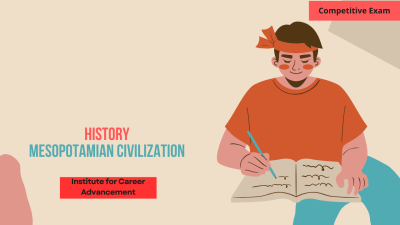Mesopotamian Civilization
Mesopotamian Civilization refers to one of the world’s earliest and most influential ancient civilizations, located in the region between the Tigris and Euphrates rivers, in present-day Iraq and parts of Syria and Turkey. Known as the "Cradle of Civilization," Mesopotamia gave birth to some of the first urban societies, including the Sumerians, Akkadians, Babylonians, and Assyrians. This civilization is renowned for its innovations in writing (cuneiform), law (Code of Hammurabi), architecture (ziggurats), and advancements in mathematics, astronomy, and agriculture. The rich cultural, religious, and political legacy of Mesopotamia laid the foundations for many aspects of modern civilization. মেসোপটেমিয়ার সভ্যতা বলতে বিশ্বের প্রাচীনতম এবং সবচেয়ে প্রভাবশালী প্রাচীন সভ্যতাকে বোঝায়, যা বর্তমান ইরাকের টাইগ্রিস এবং ইউফ্রেটিস নদীর মধ্যবর্তী অঞ্চলে এবং সিরিয়া ও তুরস্কের কিছু অংশে অবস্থিত। "সভ্যতার জন্মস্থান" নামে পরিচিত মেসোপটেমিয়া সুমেরীয়, আক্কাদীয়, ব্যাবিলনীয় এবং অ্যাসিরীয় সহ প্রথম কিছু শহুরে সমাজের জন্ম দেয়। এই সভ্যতা লিখিত (কিউনিফর্ম) আইন (হাম্মুরাবির কোড) স্থাপত্য (জিগ্গুরাত) এবং গণিত, জ্যোতির্বিজ্ঞান এবং কৃষিতে অগ্রগতির জন্য বিখ্যাত। মেসোপটেমিয়ার সমৃদ্ধ সাংস্কৃতিক, ধর্মীয় এবং রাজনৈতিক উত্তরাধিকার আধুনিক সভ্যতার অনেক দিকের ভিত্তি স্থাপন করেছিল।
English
Last updated
Sat, 01-Mar-2025



















